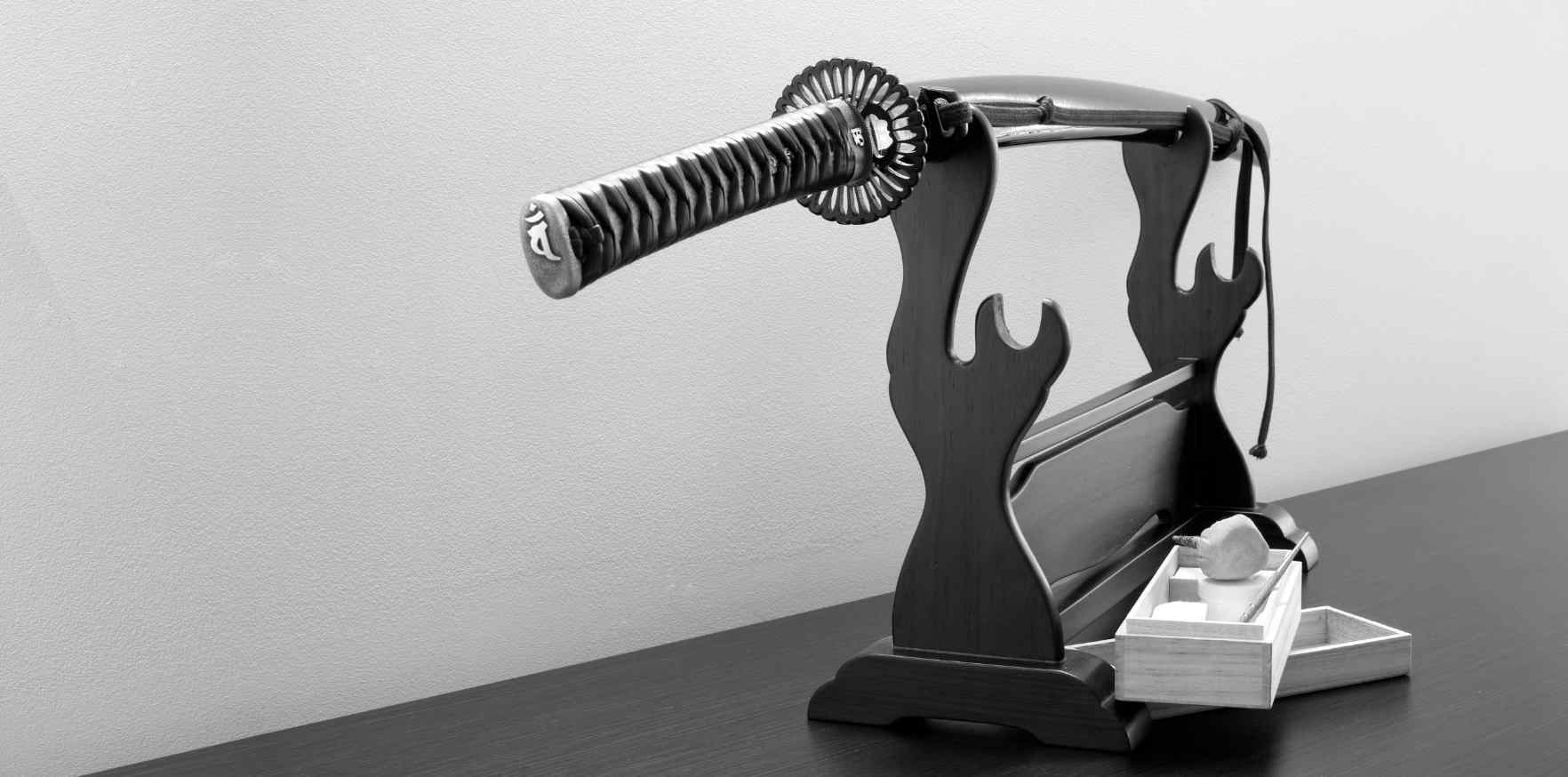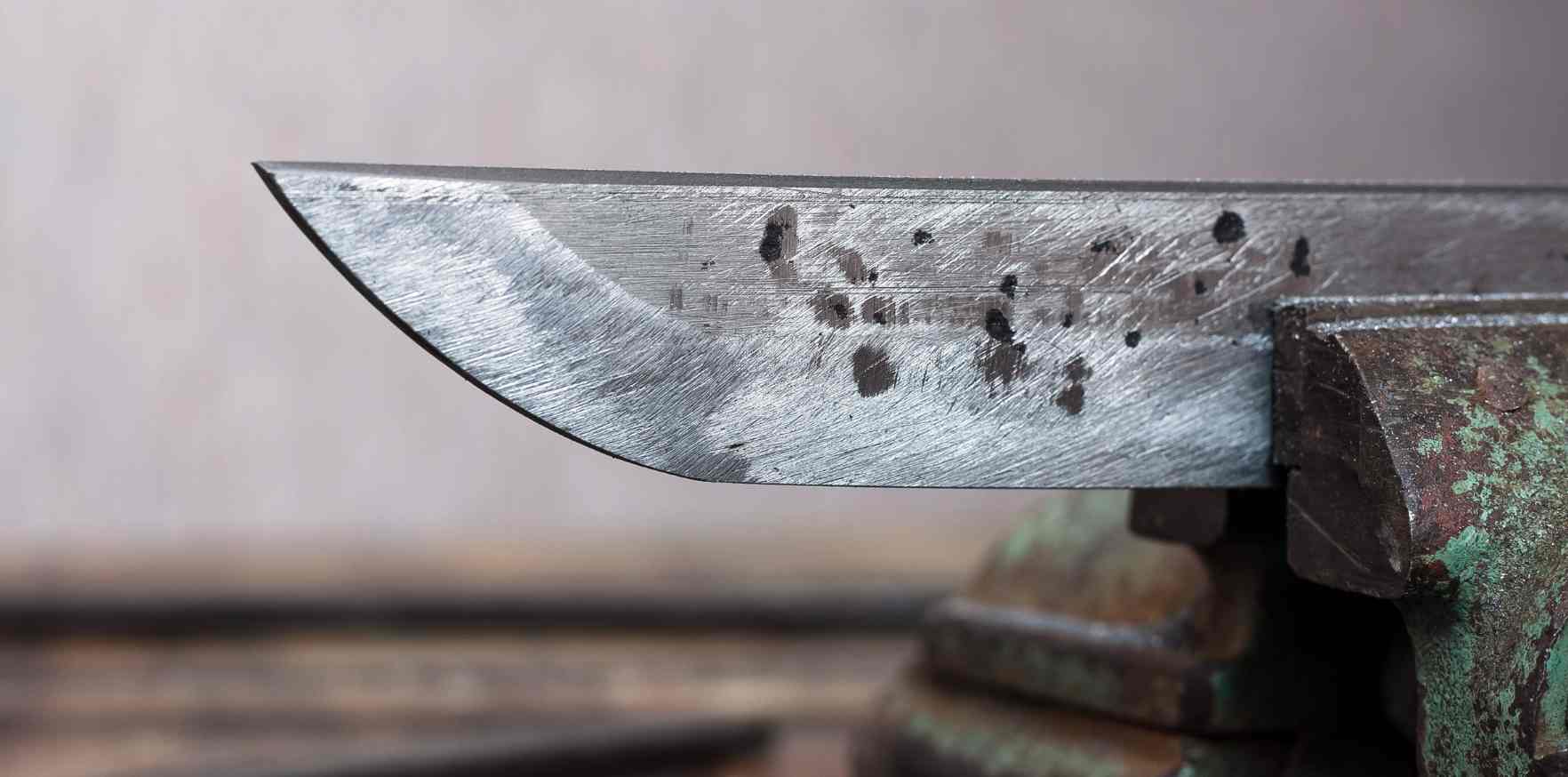In this blog post we will explore the complexities of katana maintenance, answering all questions that will help you through this procedure. Keep in mind that the katana, a symbol of the Samurai, is both a weapon and a work of art that recounts tales of wars, tradition, and workmanship. Hence, sword cleaning and blade maintenance are integral to preserving its integrity, aesthetic beauty, and longevity.
1. Introduction to Katana Cleaning: The Importance and Basics
a. Why Cleaning a Katana Matters
Cleaning your katana extends beyond maintaining its appearance. The process preserves the blade's sharpness, prevents rust prevention, and extends its lifespan. A well-maintained Japanese sword is a testament to the samurai's enduring legacy.
b. How Often Should I Clean My Katana
The frequency of sword cleaning depends on your katana's usage and storage conditions. For a frequently used katana, a basic cleaning after each use is recommended. If it's displayed or stored, a thorough cleaning every three to four months should suffice.
c. How Can I Tell If My Katana Needs Cleaning
Your katana might require cleaning if it shows signs of discoloration, surface scratches, or rust spots. The presence of dust or a dull blade are also clear indicators.
2. What Materials Do I Need to Clean a Katana
a. Choosing the Right Cleaning Kit
The primary materials you need for a katana cleaning include a cleaning kit composed of uchiko powder, sword oil, a cleaning cloth, a rice paper or soft cloth for oil application and often a small hammer and awl for disassembly. The uchiko powder is essentially a finely ground stone used for cleaning the blade, while the sword oil helps to protect the blade against rust.
b. DIY Katana Cleaning: Household Alternatives You Can Use
In the absence of a specialized kit, you can substitute uchiko powder with fine talcum powder. Machine oil can serve as a stand-in for sword oil. However, it's best to use a specific sword oil. These oils are designed to provide the right viscosity and corrosion resistance needed for katanas. Regular oils may not offer the same protection and may even harm the blade in the long run. These are temporary alternatives and can't replace the efficacy of specialized sword cleaning products.
3. Preparing Your Katana for Cleaning
a. How to Safely Handle Your Katana
Safety handling is the first rule in sword cleaning. The blade of a katana should always be handled with the utmost care while cleaning it. The handle (tsuka) and the side of the blade that is close to the handle and dull should be held in position with both hands. Remember that the edge of a katana is extremely sharp and should never be touched directly.
b. Disassembling a Katana Step-by-Step
Before cleaning, disassemble your katana carefully. Remove the tsuka by tapping the seppa away from the habaki. This should free the blade.
4. Cleaning the Blade
a. How to Use Uchiko Powder: Traditional Blade Cleaning
Uchiko powder is a type of finely ground stone, traditionally used in Japanese sword maintenance. It's used to clean the blade and prepare it for oiling.
Tap the uchiko ball lightly along the blade, spreading the powder evenly. Use a clean cloth to gently rub the powder across the surface. This powder will absorb any existing oil and moisture on the blade. Never rub back and forth, as this could damage the blade.

b. Applying Oil to Your Katana: Protecting the Blade from Rust
After cleaning with uchiko, apply sword oil. Using a clean cloth, apply a thin layer of oil along the blade. This not only adds a sheen but also prevents rust.
5. Caring for the Tsuka and Other Non-Blade Components
a. Cleaning the Tsuka: Maintaining the Handle of Your Katana
The tsuka or handle often collects dirt and sweat during use. To clean it, use a dry cloth to gently wipe the handle. If there's dirt or grime, lightly dampen a cloth with a mild soap solution and wipe the handle, ensuring it's completely dry afterward to prevent moisture damage.

b. Caring for Your Saya: Keeping Your Katana's Scabbard in Top Shape
The saya, or scabbard, protects your blade when not in use. Regularly dust it off and occasionally apply a thin layer of wax to maintain its finish and prevent cracking.
6. Common Katana Cleaning Mistakes and How to Avoid Them
a. The Do's and Don'ts of Katana Cleaning
- Avoid rushing the process and using inappropriate tools or materials.
- Never touch the blade directly with your hands, as the oils from your skin can cause corrosion.
- Don't use harsh chemicals or abrasives on the blade.
- Never scrape off rust, as it can cause further damage to the blade.
b. Understanding the Risks: What Can Go Wrong and How to Prevent It
Improper cleaning can lead to blade damage, rust, and even personal injury. By following correct cleaning procedures and respecting the katana, these risks can be minimized.
7. Storing Your Katana Post-Cleaning: Preserving Your Cleaned Blade
a. The Proper Way to Store a Katana
After cleaning, it is crucial to display your katana properly. Store your katana horizontally with the curve down to maintain its shape. The tsuka should be to the left, and the blade should face upward to honor the samurai. This position also prevents the oil from pooling at the edge and ensures the blade doesn't rest on its edge, which could cause dulling over time.

b. Understanding the Impact of Environment on your Katana
Heat and humidity can cause rusting and damage to your katana. Store it in a dry, cool place to prevent environmental damage.
c. What Do I Do If I Find Rust on My Katana
Rust should be treated as soon as it's spotted. Light rust can be removed with uchiko powder and oil, but deep rust requires professional help.
d. How Can I Prevent Rusting on My Katana Blade
Rusting is a common issue for katana owners and can be detrimental to your sword's longevity. Regular cleaning and oiling are key to preventing rust. Ensure that your katana is stored in a dry environment and that your hands are clean and oil-free before handling to avoid introducing corrosive elements onto the blade.

8. When to Seek Professional Help: Beyond Basic Katana Care
a. Is It Safe to Clean a Katana at Home, or Should I Hire a Professional
Cleaning a katana at home is generally safe, provided you take the necessary precautions and follow the correct procedure. However, if your katana is of significant monetary or historical value, or if it has serious issues like extensive rusting, it would be advisable to consult a professional sword care expert.
b. Identifying Issues: When Your Katana Might Need a Professional
Deep scratches, chips in the blade, and major rusting are issues for a professional. Seek help if you're unsure of the damage.
c. Selecting a Sword Care Professional: What to Consider
Choose a professional who specializes in Japanese swords. They should have a solid understanding of Japanese culture, samurai traditions, and nihonto care.
Maintaining a katana embodies the spirit of bushido, the samurai code, honoring the past while ensuring the blade's future. Care for your katana with respect, and it will remain a symbol of the samurai's strength, grace, and artistry for years to come.
In conclusion...
Time, patience, and respect are all necessary for the process of cleaning and preserving your katana. It's not only about maintaining the blade's aesthetic appeal and practicality; it also serves as a symbol of respect for the samurai ethos, which is the pinnacle of Japanese culture and workmanship. With proper care, your katana can remain a captivating and lasting symbol of this fascinating aspect of Japanese heritage.
Happy cleaning, and may your katana always shine brightly, mirroring the careful attention and respect you've shown it!





